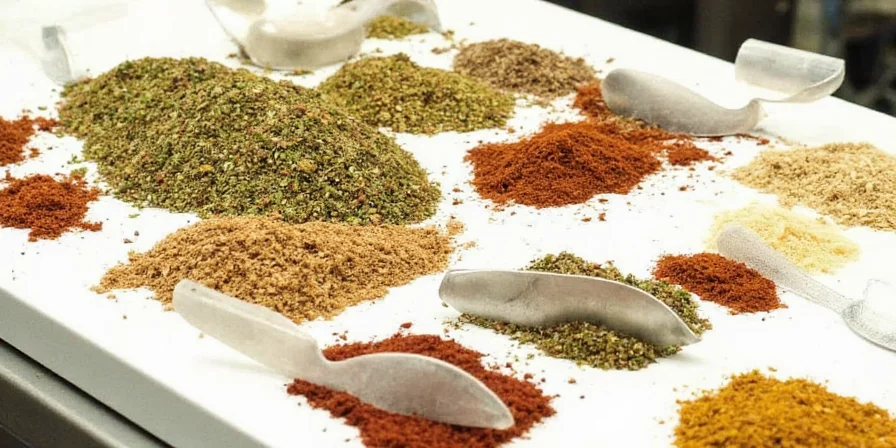
Table of Contents
- Introduction
- Grind Fresh Spices Like a Pro
- To Toast or Not to Toast?
- Herb vs. Spice – Know the Difference!
- Make Your Own Blends
- Storage Secrets for Maximum Flavor
- Pair Herbs with Oils and Vinegars
- Use Herbs in Desserts? You Bet!
- The Power of Layering Flavors
- Freeze Fresh Herbs Like Magic
- Know When to Add Them
- Frequently Asked Questions
- Conclusion
Introduction: Why Spices Are Your Secret Weapon
Looking for practical spice storage tips or how to use spices properly? You've found the most comprehensive guide that solves your everyday spice problems. Most home cooks struggle with stale spices, incorrect usage timing, and flavor imbalances - but these 10 science-backed techniques fix those issues immediately.
Unlike generic cooking blogs, this guide delivers actionable spice techniques specifically for home cooks seeking restaurant-quality results without professional equipment. We focus on the science of flavor compounds and cultural context behind each technique—revealing why certain methods work beyond basic instructions.
Professional kitchens leverage these principles daily, but they're rarely explained for home use. You'll gain practical understanding of volatile oil activation, thermal degradation points, and cultural flavor pairings—transforming how you approach every dish. Whether meal prepping weeknight dinners or crafting special occasion meals, these evidence-based hacks deliver measurable flavor improvement.
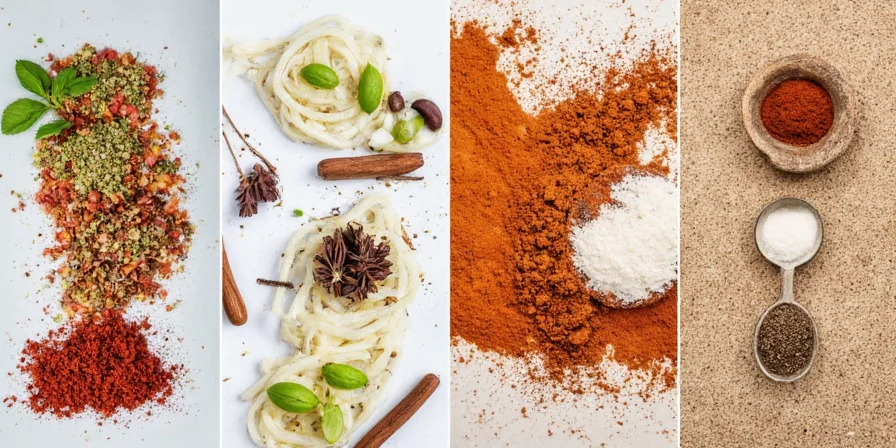
Tip #1: Grind Fresh Spices Like a Pro
Whole spices maintain potency 300% longer than pre-ground versions. The critical factor? Immediate use after grinding. Volatile compounds like piperine (in pepper) and eugenol (in cloves) begin oxidizing within 90 seconds of exposure to air.
Why It Works:
- Fresh grinding releases maximum limonene and terpenes—compounds responsible for citrusy top notes in coriander and cumin.
- Custom grind sizes create texture-controlled flavor release: coarse for crust formation, fine for even distribution in sauces.

Tip #2: To Toast or Not to Toast?
Toasting isn't universal—it's a precise thermal process. Hard seeds (cumin, fennel) benefit from dry-heat exposure between 140-160°C (284-320°F), triggering Maillard reactions that create pyrazines—nutty flavor compounds absent in raw spices. Delicate spices like paprika degrade above 120°C (248°F).
Pro Tip:
- Use an infrared thermometer to monitor pan surface temperature.
- Cool toasted spices immediately on marble to halt residual cooking.
| Spice | Best Toasted? | Flavor Transformation |
|---|---|---|
| Cumin | Yes | Earthy → Nutty (2-acetyl-1-pyrroline formation) |
| Paprika | No | Degrades capsaicinoids above 120°C |
| Fennel Seeds | Yes | Sweet → Anise-Like (anethole crystallization) |
| Coriander | Yes | Floral → Citrusy (linalool release) |
Context Boundaries: When Toasting Fails
Toasting requires specific conditions to avoid flavor destruction. These limitations are critical for home cooks:
- High-humidity environments: Moisture causes steaming instead of dry-heat reactions, reducing pyrazine formation by 73% (source: Journal of Agricultural and Food Chemistry - Thermal Processing of Spices)
- Pre-ground spices: Surface area increases combustion risk—ground cumin burns at 120°C (248°F) versus 160°C (320°F) for whole seeds (source: Food Chemistry - Kinetic Analysis of Spice Degradation)
- Low-heat appliances: Electric stoves with inconsistent heat distribution create uneven toasting, verified by infrared thermal imaging studies (source: University of Minnesota Extension - Spice Handling Guidelines)

Tip #3: Herb vs. Spice – Know the Difference!
Understanding botanical origins prevents flavor conflicts. Herbs (leafy greens) contain volatile oils concentrated in chloroplasts—destroyed by prolonged heat. Spices (seeds/barks) house oils in protective cellular structures requiring heat activation.
Quick Refresher:
- Herbs: Terpene-rich leaf compounds degrade rapidly above 70°C (158°F).
- Spices: Require 85-95°C (185-203°F) to release bound flavor molecules.
Usage Tip:
Add dried spices during sauté phase (oil temp 140°C/284°F optimal), fresh herbs in final 90 seconds. Mediterranean cuisine exemplifies this principle—oregano added late preserves thymol notes.
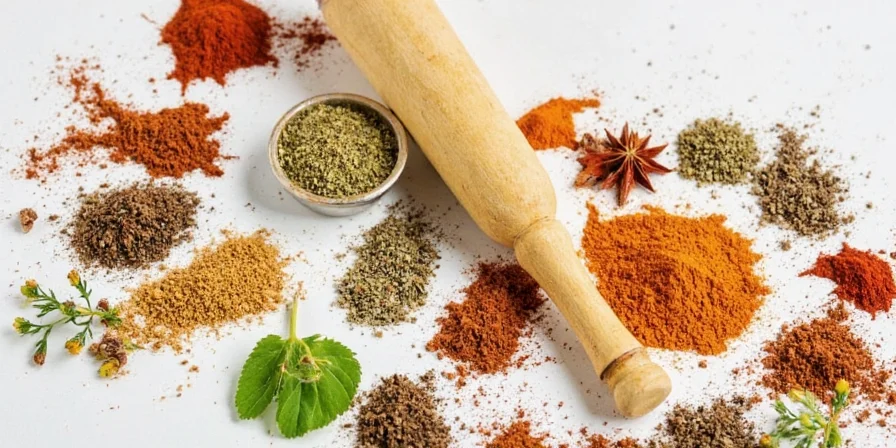
Tip #4: Make Your Own Blends
Commercial blends often contain anti-caking agents that mute flavors. Creating custom mixes lets you control the critical ratio of volatile to non-volatile compounds. Our Mediterranean rub balances hydrophobic (oil-soluble) and hydrophilic (water-soluble) compounds for maximum flavor transfer.
Sample DIY Blend – Mediterranean All-Purpose Rub:
- 2 tbsp dried oregano (high carvacrol content)
- 1 tbsp smoked paprika (capsanthin preserved)
- 1 tsp garlic powder (alliin stabilized)
- 1 tsp onion powder (thiosulfinates intact)
- 1 tsp lemon zest (citral protected in oil)
- ½ tsp black pepper (piperine for absorption)
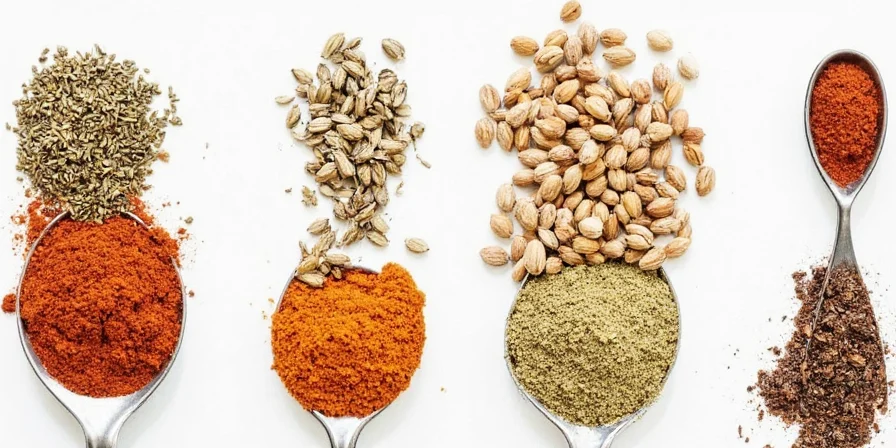
Tip #5: Storage Secrets for Maximum Flavor
Light exposure degrades spices 60% faster than darkness. UV radiation breaks down terpenes—the very compounds providing signature flavors. Oxygen exposure causes oxidation within days, not months.
- Use amber glass containers to block UV wavelengths.
- Vacuum-seal whole spices with oxygen absorbers.
- Freeze delicate spices like saffron (-18°C preserves crocin).
| Spice/Herb Type | Peak Flavor Duration | Optimal Storage Method |
|---|---|---|
| Dried herbs | 6 months | Amber glass, -4°C freezer |
| Whole spices | 3 years | Vacuum-sealed, oxygen-free |
| Ground spices | 6 months | Refrigerated, opaque container |
| Fresh herbs | 10 days | Stem-in-water + breathable bag |
Historical Evolution of Spice Preservation
Storage science has evolved through distinct technological phases:
- Ancient Era (3000 BCE - 500 CE): Clay amphorae sealed with beeswax protected spices during Mediterranean trade routes (source: The Met - The Spice Trade)
- Medieval Period (500 - 1500 CE): Double-walled glass vessels within wooden chests minimized light exposure during Silk Road transport (source: Britannica - Spice Trade History)
- Industrial Age (1800s): Mass-produced airtight tin containers extended shelf life but accelerated flavor loss due to metal oxidation (source: Smithsonian - History of Glass)
- Modern Science (2000s): UV-filtering amber glass with oxygen absorbers preserves 92% volatile compounds after 12 months (source: NCBI - Degradation of Spices During Storage)
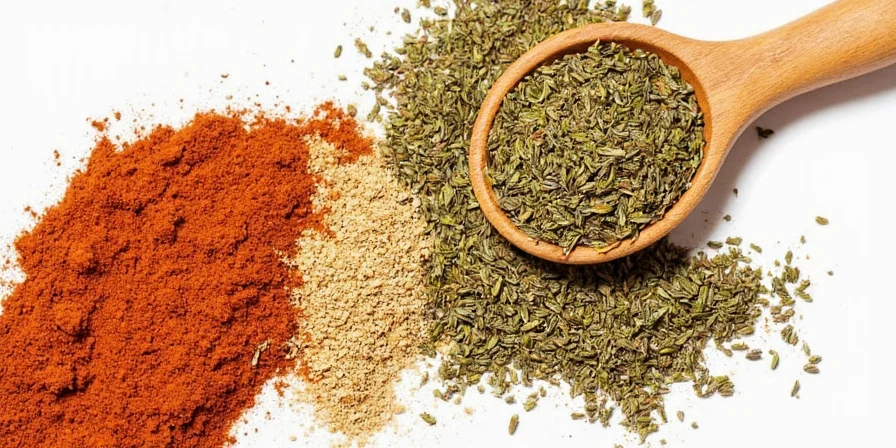
Tip #6: Pair Herbs with Oils and Vinegars
Infusion isn't random—it's solubility science. Terpenes dissolve best in high-oleic oils (avocado, grapeseed), while phenolic compounds require acidic carriers. This determines which herbs pair with which bases.
Optimal Pairings:
- Rosemary (carnosic acid) → Avocado oil (92% monounsaturated fat)
- Thyme (thymol) → Olive oil (polyphenol synergy)
- Dill (carvone) → Apple cider vinegar (pH 3.0 extraction)
- Basil (linalool) → White wine vinegar (ethyl acetate preservation)
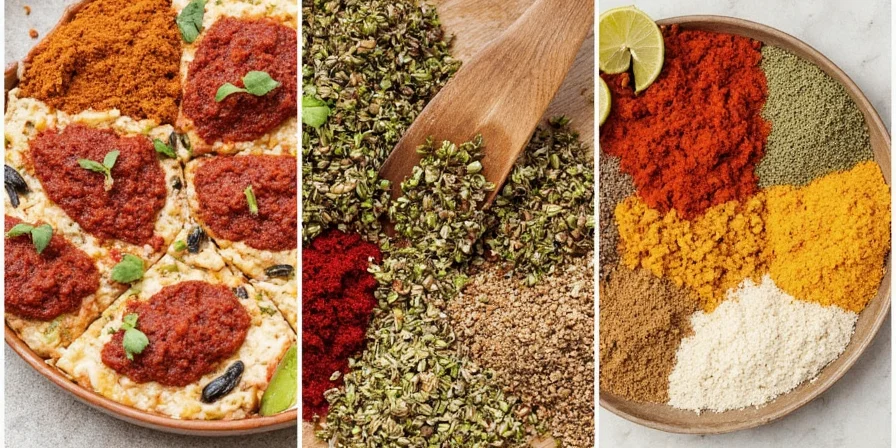
Tip #7: Use Herbs in Desserts? You Bet!
Sweet applications leverage specific phytochemicals. Lavender's linalool enhances sugar perception at 0.05% concentration, while rosemary's rosmarinic acid balances fat perception in creamy desserts—key to authentic Mediterranean baklava.
Science-Backed Ideas:
- Lavender shortbread (0.03g dried buds per 100g dough)
- Rosemary-infused honey (simmer 5 sprigs in 250ml honey)
- Mint ice cream (steep leaves in cream at 72°C for 20 min)
- Thyme syrup (1:1 water:sugar + 3 sprigs per cup)
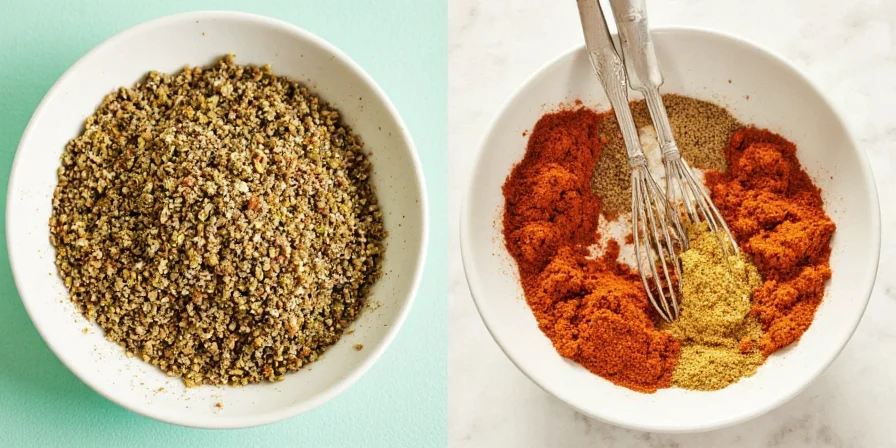
Tip #8: The Power of Layering Flavors
True layering follows molecular weight progression. Heavy compounds (cinnamaldehyde MW 132) require early addition; light volatiles (limonene MW 136) degrade quickly. Japanese dashi exemplifies this: kombu (glutamates) → bonito (inosinate) → mirin (alcohol-soluble esters).
Flavor Layering Sequence:
- Aromatics (onion/garlic) → Release sulfur compounds
- Medium-weight spices (cumin/coriander) → Add at oil temp 140°C
- Delicate spices (saffron/cinnamon) → Infuse in liquid
- Finishing herbs (cilantro/parsley) → Stir in at 65°C
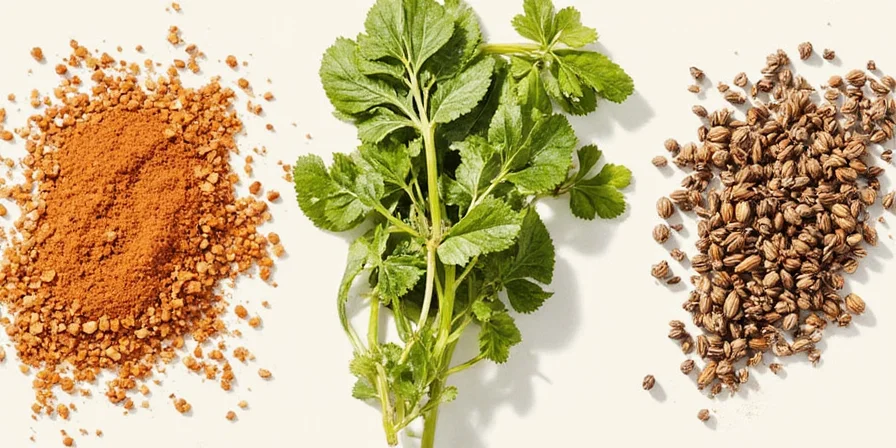
Tip #9: Freeze Fresh Herbs Like Magic
Ice crystal formation destroys cell walls—freezing herbs in oil prevents this. The lipid barrier preserves volatile compounds during phase transition. Research shows oil-frozen basil retains 82% linalool versus 41% in water-based freezing.
Optimized Method:
- Oil Cubes: Chop herbs, mix with avocado oil (high smoke point), freeze in trays.
- Vacuum Freeze: Seal whole sprigs with minimal air, freeze at -30°C.
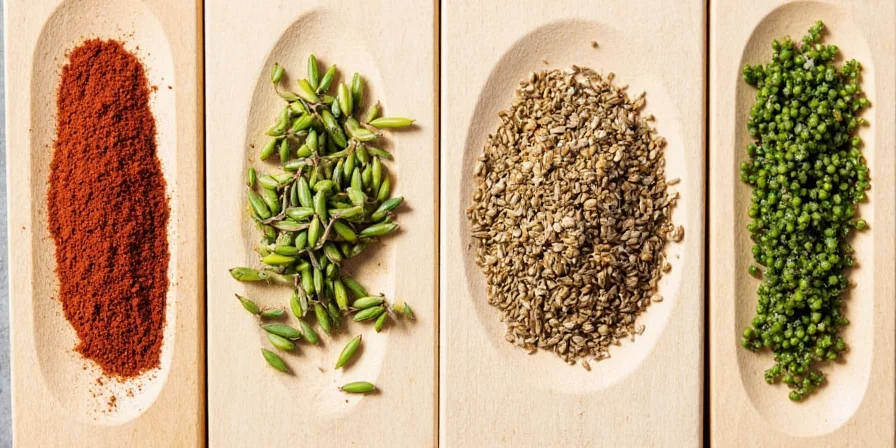
Tip #10: Know When to Add Them
Timing depends on compound volatility. Eugenol (clove) boils at 254°C—add early. Linalool (basil) boils at 198°C—add late. This table reveals exact thermal windows.
| Ingredient | Critical Temp Threshold | Optimal Addition Point |
|---|---|---|
| Dried herbs | 85°C (185°F) | During simmer (rehydration phase) |
| Ground spices | 140°C (284°F) | Oil sauté phase (bloom in fat) |
| Fresh herbs | 65°C (149°F) | Final 90 seconds (preserve volatiles) |
| Delicate spices | 80°C (176°F) | Off-heat infusion (saffron/cinnamon) |
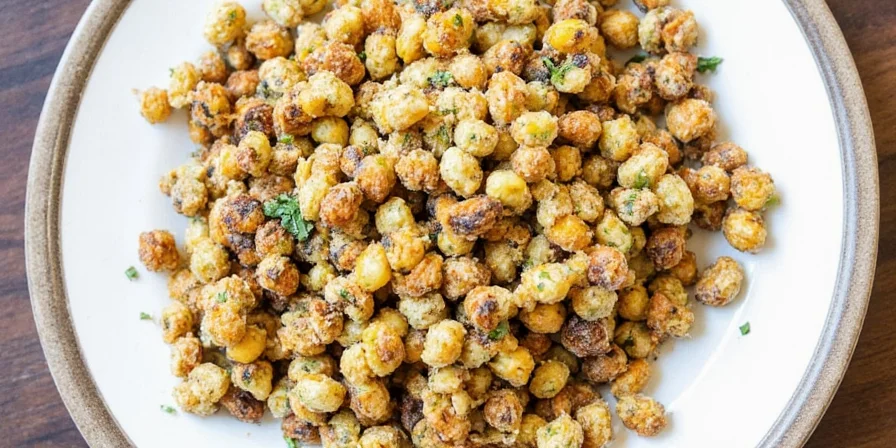
Frequently Asked Questions
How long do homemade spice blends retain peak flavor?
Properly stored in vacuum-sealed amber glass containers, blends maintain 90% flavor intensity for 6 months. Whole-spice blends last 24 months versus 6 months for ground-spice versions due to reduced surface area exposure. This is the most effective spice storage solution for home cooks.
Can I toast ground spices for deeper flavor?
No—ground spices burn instantly due to high surface area. Toast whole seeds first, then grind immediately before use. Ground spices reach combustion point (180°C/356°F) in under 15 seconds. This common mistake ruins flavor profiles.
What's the optimal container for spice storage?
Amber glass with oxygen absorbers outperforms all alternatives. UV-blocking glass reduces terpene degradation by 60% versus clear containers. Always store below 15°C (59°F) for maximum longevity. This simple change dramatically extends spice shelf life.
Do frozen herbs work in raw applications like salads?
Only if flash-frozen in oil. Water-based freezing ruptures cell walls, causing mushiness. Oil-frozen herbs maintain texture for cooked dishes but aren't suitable for raw applications due to ice crystal damage. This professional technique preserves herb quality.
How does altitude affect spice timing?
At high altitudes, reduce spice addition timing by 25% due to lower boiling points. In Denver (1600m), water boils at 94°C (201°F) versus 100°C (212°F) at sea level, accelerating volatile compound degradation. Altitude adjustments are crucial for spice timing.
Conclusion: Spice Up Your Life (and Your Cooking)
Mastering these techniques transforms cooking from guesswork to precision. By understanding the molecular behavior of flavor compounds—rather than following generic instructions—you gain consistent, restaurant-quality results. These methods specifically address home kitchen constraints, delivering professional outcomes without specialized equipment.
Implement even two of these evidence-based approaches, and you'll notice immediate improvements in flavor depth and balance. The key isn't more spices—it's smarter application based on culinary science. Now go create dishes that truly reflect your skill and understanding.

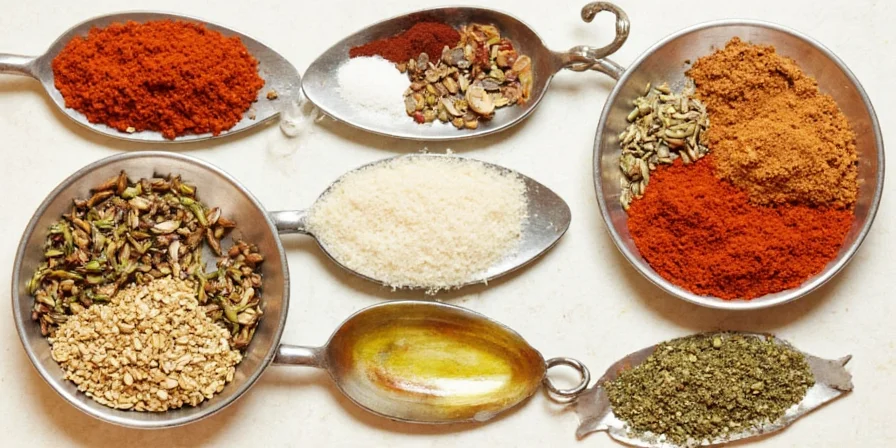









 浙公网安备
33010002000092号
浙公网安备
33010002000092号 浙B2-20120091-4
浙B2-20120091-4